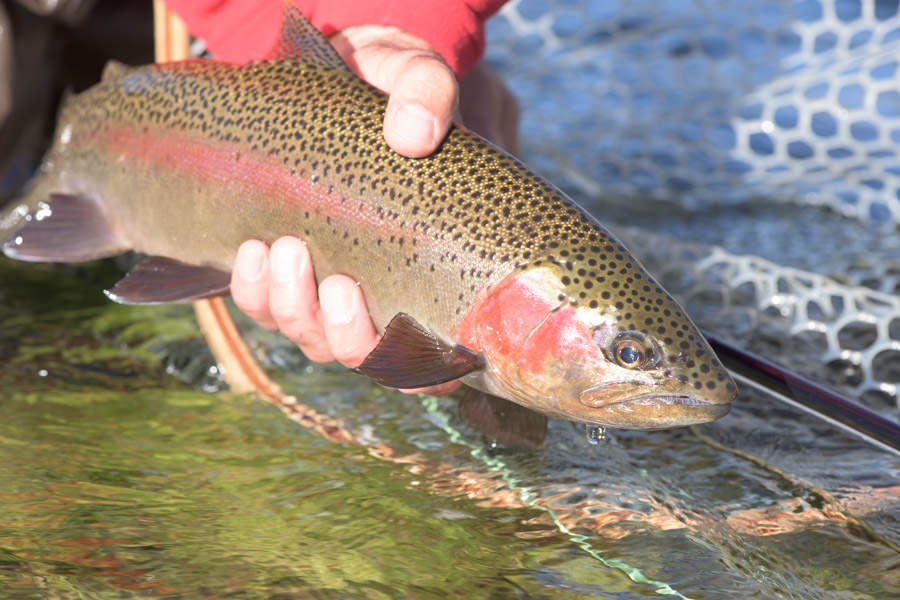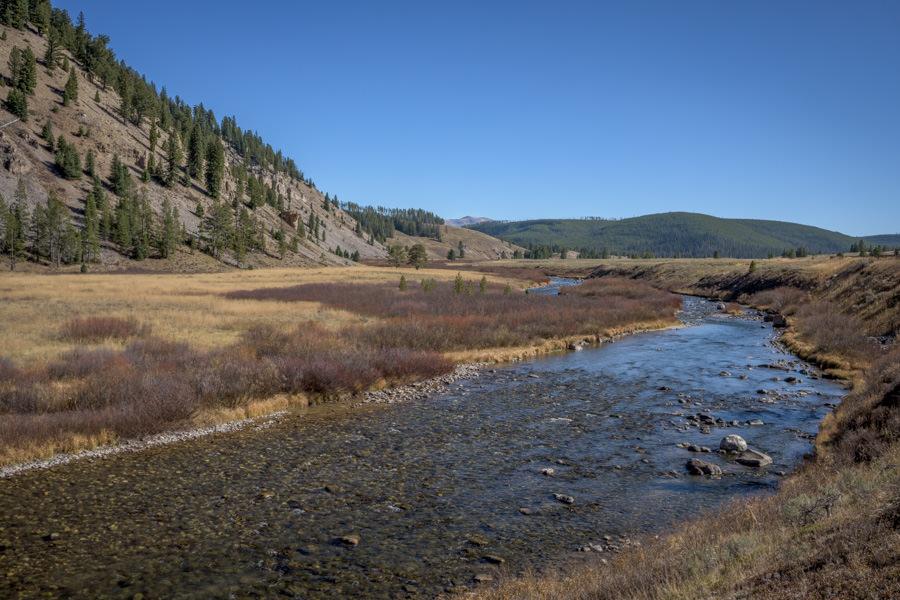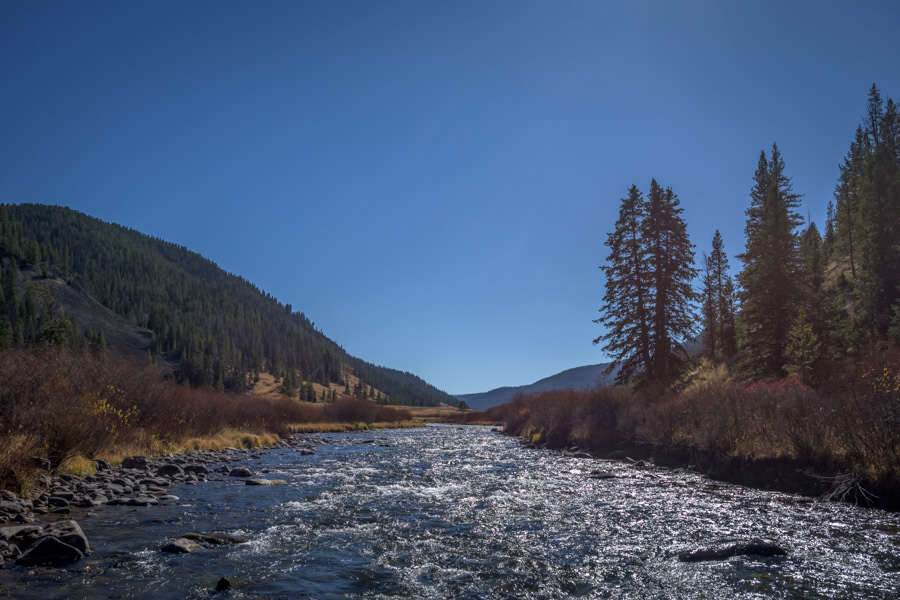The Gallatin River starts its journey within Yellowstone National Park in the northwest corner of the park high in the Gallatin Mountain range. Gallatin Lake, a picturesque cirque at the western flank of Three Rivers Peak is its birth place. There are two main sections of the Gallatin, the upper 12 miles from the lake to Fawn Pass trail head and hwy 191, within this upper 12 miles roughly the top 6 miles is in a Bear Management area that doesn't allow any off trail travel or recreation. The lower 11 miles from the Fawn Pass area to the park boundary. It tumbles out from the lake at a steep gradient for the first few miles before entering a small meadow valley where it slows slightly, it continues to meander through small meadows and narrow valleys before breaking out into the broader valley and the lower 11 miles along highway 191. Ample access, solid trout numbers, and beautiful scenery make the Gallatin a more than worthwhile stop to any anglers fly-fishing trip.
Fly-Fishing the Gallatin River Tips and Overview
Of the two sections of the Gallatin that lie within Yellowstone National Park, the lower 11 miles warrants more attention. Fish numbers and size are better in this stretch because of better habitat and a greater in stream flow after Fan Creek and Specimen Creek join the Gallatin. Access is easy with highway 191 paralleling it and pull offs are plentiful. Don't let this scare you away as the river is just far enough away from the road that it rarely disrupts a day's fishing, and with the ample pull offs it spreads out the moderate fishing pressure this section does receive. The upper 12 miles the fish size drops slightly and the gradient picks up. The first few miles below Gallatin Lake don't offer much in the way of good angling other than a few bends and holes along the way. Also the section upstream of Fan Creek for a few miles is a gorgeous stretch of water that doesn't provide much holding water or habitat for bug life. There is a sweet spot if you hike up the Bighorn Pass Trailhead a few miles to its intersection with the Gallatin Bear Management Area that can provide some quality fish that are tucked under deep undercut banks. Both sections provide cold, clear water so it is best fished through the summer months when the water warms slightly and the bug life is more active. Always practice stealth here as the fish can be wary with the clear water. *Please note that roughly 6.6 miles up from the Bighorn Pass Trailhead at about where campsite WB6 is located the Gallatin Bear Management Area starts that requires no off trail travel or recreation.
Fly-Fishing Trips from Gallatin Lake to Fan Creek
The upper section offers solitude and beauty with easy hike in access. Fish size averages 10-12 inches with the majority of catches being cutthroat and brook trout, with rainbows, and browns sometimes present. Here it is still a very small stream cutting its way through small meadows in narrower valleys and higher up tumbling steeply through pine forest. A lightweight rod and dry fly is the way to fish this section. Parachute Adams, Elk Hair Caddis, Ants, and Terriestrial patterns are all you will need to tempt these feisty trout to the surface. Because of the habitat move along rather quickly until you find likely looking holes or banks or until you start catching fish then slow down, once that ends start covering water again. The fish can be spread out in this section. Wildlife viewing in the upper areas can be good with elk, bears, moose, and bighorn sheep inhabiting the region. *Please note that roughly 6.6 miles up from the trail head at about where campsite WB6 is located a Bear Management Area starts that requires no off trail travel or recreation. You can only fish in areas that the trail is directly next to the trail, where the trail and creek move away from each other you are considered off trail and that is not allowed. For further info please see the Yellowstone Park website for bear management areas or call the YNP backcountry office.
Fishing from Fan Creek to the Yellowstone Park Boundary
The lower section of about 11 miles runs through a broader valley with picturesque cliffs and mountain peaks looming in the distance. The habitat here is excellent and provides plenty of classic riffles, runs, holes and undercut banks. Wading is easy with low brush and willow lining the banks. Ample pullouts along highway 191 provide great access throughout this section. The river is still quite small but supports healthy populations of rainbow, brown, cutthroat, and some brook trout. As mentioned above the water is cold and clear so summer months are best. Your basic attractor dries and small bead-headed nymphs will do the job nicely. Parachute Adams, Elk Hair Caddis, Chubbies, Ants and Terrestrial patterns from size #10-18 are your go-to dry flies, then Pheasant Tails, Copper Johns, Hare's Ears, Lightning Bugs, and Rubber Legs in similar sizes can be dropped off your dry fly in the deep runs and holes if the fish aren't willing to rise to the surface.
The more time you spend fishing the Gallatin in the park the more you'll learn to appreciate how special it is. You can also benefit from learning about its specific hatches, which will only improve your catch rates. There are some surprisingly large fish to be had as well in the park. Remember to always keep a low profile and watch where your shadow is cast as to not spook the fish in the very clear waters of the Gallatin.
























